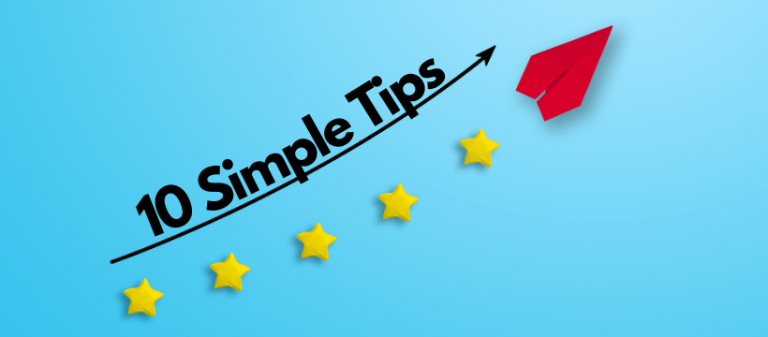Invest in Your Business’s Future in 2024
In the ever-evolving world of business, one thing remains constant: customers are the lifeblood of any successful enterprise and retaining them can be more challenging than acquiring them. However, according to Semrush, only 18% of businesses focus on customer retention. As we approach 2024, the role of a Customer Retention Strategist (CRS) is more critical than ever.
In this article, we’ll explore the myriad benefits of hiring a customer retention strategist for your business, budgeting for one and the benefits it brings to your business. From boosting customer lifetime value to driving sustainable growth, these professionals can be a game-changer for your company.
The Need for a Customer Retention Strategy: Why It’s Vital for 2024
In today’s dynamic business landscape, the significance of a robust customer retention strategy cannot be overstated. The year 2024 presents a unique set of challenges and opportunities, making the retention of existing customers more critical than ever. Here we explore the changing dynamics, elevated customer expectations, and the fierce competition that underline the vital role of customer retention in the upcoming year.
The Changing Landscape
As we step into 2024, the market dynamics are undergoing rapid transformations. Factors such as technological advancements, market globalization, and the ever-evolving digital landscape are reshaping how companies interact with their customers. It’s not just about offering a product or service anymore; it’s about creating a holistic customer experience. Understanding and adapting to these shifting market dynamics are crucial for businesses looking to thrive and expand their footprint in the coming year.
Increased Customer Expectations
Customer expectations are on the rise and today it’s more discerning and demanding than ever before. With access to an abundance of information at their fingertips, they expect a seamless, personalized, and delightful experience at every touchpoint. Customer loyalty and satisfaction hinge on how effectively companies can anticipate and fulfill these expectations. This aspect emphasizes the need for a well-defined customer retention strategy that keeps clients engaged and satisfied……which brings me to my next point.
“Just having satisfied customers isn’t good enough anymore. If you really want a booming business, you have to create raving fans.”
― Ken Blanchard.
Competition Is Fierce
The need to stand out in the year 2024 finds businesses operating in an intensely competitive marketplace. In virtually every industry, numerous players vie for the same pool of potential customers. What’s more, in a world where switching to a competitor is as easy as a simple click, businesses must adopt strategies that not only attract but also retain their clientele. It’s not just about acquiring customers; it’s about retaining them. The phrase, “With a simple click, your hard-earned customer has gone to a competitor,” holds truer than ever. And to make it even more challenging, in some cases, the competition essentially acquires your customers using your own marketing dollars. Hence, standing out in this crowded arena and keeping customers loyal is a formidable task, necessitating a well-crafted customer retention strategy.
Benefits of a Customer Retention Strategy for Your Business
Now that we’ve established the need for a customer retention strategy, let’s delve into the myriad benefits it bestows upon your business. A well-crafted customer retention strategy goes beyond just retaining customers; it offers a wealth of advantages that can significantly impact your bottom line and overall success.
Enhanced Customer Lifetime Value
One of the standout advantages of a customer retention strategy is the enhancement of Customer Lifetime Value (CLV). Retained customers tend to engage with your business over an extended period. As a result, their overall value to your business increases. These loyal customers not only make more frequent purchases but are also more likely to explore and invest in other products or services your business offers. By extending the lifespan of your customer relationships, you inherently boost the revenue each customer generates over time, contributing significantly to your business’s financial success.
Cost Savings
Customer acquisition is often an expensive endeavour. It involves marketing, advertising and sales efforts that consume both time and resources. On the other hand, a well-executed customer retention strategy is a cost-effective alternative. According to Harvard Business Review’s, “The Value Of Keeping The Right Customers”, the actual cost of acquiring a new customer versus retaining an existing one is anywhere from 5 to 25 times more expensive. Retained customers require less marketing and promotional expenditure, as they are already familiar with your brand and have a positive perception of your products or services. Moreover, these satisfied customers are less price-sensitive and more inclined to make repeat purchases, making retention not only cost-effective but also highly profitable.
Advocacy and Word of Mouth
Your happy and satisfied customers are your best brand advocates. They are more likely to refer your business to their network, sharing their positive experiences and encouraging new customers to come your way. Word of mouth and recommendations from existing clients hold significant weight in attracting potential customers. A well-implemented customer retention strategy not only secures your existing customer base but also cultivates brand advocates who actively contribute to your business’s growth and reputation.
As I like to say “Your customers are your walking billboards”
Predictable Revenue Streams
Customer retention offers an invaluable element of predictability to your revenue streams. While the acquisition of new customers can be sporadic and uncertain, retained customers provide a stable foundation for your business. They offer dependable, recurring revenue, creating a safety net in times of market fluctuations or economic uncertainty. This stability not only safeguards your business but also allows you to allocate resources and plan for growth more effectively.
A well-crafted customer retention strategy doesn’t just keep customers coming back; it empowers your business with enhanced CLV, cost savings, the advocacy of satisfied customers, and the reassuring predictability of revenue streams. These benefits combine to strengthen your business’s financial health, brand reputation, and overall prosperity.
Budgeting for a Customer Retention Strategist for 2024
You may be thinking “Finally!! Now we are talking about actual numbers!”, but before I could even talk to you about numbers, I had to give you value for these numbers.
As you embark on budgeting for a CRS in this upcoming year, it’s essential to understand the core elements that will shape your financial planning. Your investment in a CRS is a strategic move with the potential to yield significant returns for your business.
Let’s explore the crucial considerations that should inform your budgeting process and as the infamous movie quote of all time goes……………………”Show Me The Money”:
Assessing the Cost of Hiring a Customer Retention Strategist
The cost of hiring a CRS is an essential consideration in your budget. This cost can be justified by comparing it to the value of retaining customers. You’ll want to calculate how much it costs to bring back a customer who left versus retaining a customer who is on the brink of departure. This calculation can be determined by assessing the expenses related to reacquisition, such as marketing and promotional costs, versus the cost of nurturing an existing customer relationship.
Customer retention Rate
Customer Retention Rate, or CRR for short, is a critical performance indicator that companies use to assess how well they can hold onto current clients for a given amount of time. It is commonly expressed as a percentage and serves as a useful gauge of client loyalty and satisfaction.
Use the following formula to calculate your retention rate:

E – The number of customers your business had at the end of the time period
N – The number of new customers gained within the time period
S – The number of customers at the beginning of the time period
Customer Acquisition cost
Customer Acquisition refers to the process of identifying, attracting, and acquiring new customers or clients for a business or organization. It is a fundamental aspect of business growth and revenue generation, as it involves expanding the customer base by bringing in individuals or entities who have not previously conducted business with the company.
Amount Spent on Sales & Marketing / New Customer Acquired = Customer Acquisition Cost
Customer Lifetime Value (CLV)
Calculating the CLV is fundamental to understanding the long-term value each customer brings to your business. The formula typically involves assessing the average purchase value, purchase frequency, and customer lifespan. This figure provides you with a clear insight into the potential revenue that a customer can generate over their engagement with your business. It’s a crucial parameter in your budgeting process, as it helps you justify and allocate resources to customer retention efforts effectively.
Amount Annual Revenue Per Customer X Average Lifetime of Customer = Customer Lifetime Value
Calculating Your Business’s Lost Revenue IE: Churn Rate
Calculating your business’s lost revenue refers to the process of determining the financial impact of missed sales opportunities or customer churn. It involves assessing how much potential income your business has forgone due to factors such as customer attrition, abandoned shopping carts, unconverted leads, or any other circumstances that resulted in lost sales. This calculation helps businesses understand the monetary value of these missed opportunities and can be a valuable metric for decision-making and implementing strategies to minimize revenue losses.
100% – Customer Retention Rate = %
Using this calculation below, take a look at what you’re letting “walk out the door”:
Customer Lifetime Value – Customer Acquisition Cost = Missed Revenue
Incorporating these elements into your budgeting process will provide you with a comprehensive financial outlook for your customer retention strategy in 2024. It will help you allocate resources wisely, justify your investments, and measure the return on your customer retention efforts effectively. Ultimately, this strategic budgeting approach will position your business for success by ensuring that you can fully leverage the benefits of a customer retention strategist.
What to Expect from a Customer Retention Strategist
Hiring a retention strategist is an investment, and it’s crucial to understand what they bring to the table.
They play a central role in devising, implementing, and refining strategies that contribute to customer loyalty and business success. Their ability to analyze customer data, develop personalized strategies, and integrate efforts across departments is instrumental in building lasting relationships with customers and driving long-term profitability.
Let’s get into the specifics of a CRS and their role:
The Role of a Customer Retention Strategist
CRS’s play a pivotal role in the success of businesses aiming to enhance customer loyalty and long-term profitability. Their expertise encompasses various aspects, from understanding customer behaviour to crafting tailored strategies that promote retention.
Defining the Role
A CRS is primarily responsible for creating and implementing strategies aimed at retaining existing customers.
- Customer Analysis: CRS’s conduct a thorough analysis of customer data, focusing on behaviour, preferences, and business interactions to identify patterns, pain points, and opportunities for improvement.
- Strategy Development: Data-driven retention strategies are developed by strategists using customer analysis to address issues like reducing churn, increasing repeat purchases, and fostering customer loyalty.
- Lifecycle Mapping: They map the customer journey, identify key touchpoints for engagement and retention, and design personalized experiences that resonate with customers at each stage.
- Feedback Loop: CRS’s gather and analyze customer feedback to continually refine and adapt strategies, ensuring they align with evolving customer expectations.
- Collaboration: They work collaboratively with various departments and existing staff to ensure the successful implementation of retention strategies. Providing guidance, training and ongoing support to various teams like marketing, customer service, and product development, fostering a culture of customer-centricity throughout the organization.
Unlocking Customer Insights
Understanding customer behaviour, harnessing data-driven decision-making, and predicting churn are all integral components of this process.

Understanding Customer Behaviour: Customer Feedback and Surveys
Strategists utilize customer feedback and surveys to understand customer behaviour, utilizing feedback analysis tools for sentiment analysis, trend identification, and improvement areas.
Data-Driven Decision Making: Data Analytics and Research
Data analytics and research are crucial in customer retention strategies, enabling strategists to analyze market trends, understand customer preferences, and conduct competitor analysis to tailor strategies.
Predicting Churn
Churn Prediction Models: Developing and maintaining churn prediction models. These models use historical data to identify customers at risk of churning.
Early Warning Systems: Creating early warning systems that trigger interventions when customers exhibit signs of disengagement. These systems rely on real-time data.
Intervention Strategies: Intervention strategies include resources for personalized offers, proactive customer service, and tailored communication to re-engage customers.
Personalization Strategies
Effective customer retention strategies are built around personalization, and customer retention strategists are essential in creating customized customer experiences i.e., “hyper-personalization”.
The Power of personalization:
Personalization involves utilizing customer data to understand individual preferences and behaviour, while segmentation categorizes customers into distinct groups based on shared characteristics. This data-driven approach ensures privacy and compliance with regulations, enhancing marketing and communication efforts.
Tailored Marketing and Communication:
To implement personalized strategies and marketing campaigns. These marketing strategies include creative content development, campaign management tools, social media, email marketing and personalized communication.
Hyper-Personalization:
Hyper-personalization is a strategy aiming for personalized marketing experiences by understanding individual customer preferences. It involves advanced data analytics, real-time decision engines, and enhanced customer support through personalized service and recommendations.

Building Customer Loyalty
Building and nurturing customer loyalty is a fundamental objective of customer retention strategists. The process involves the design and management of loyalty programs and rewards, the creation of customer advocacy initiatives, and the measurement of advocacy impact. Here’s an in-depth exploration of each aspect:
Loyalty Programs and Rewards:
Customer retention strategists create rewards and benefits for loyal customers, including loyalty cards, tiered membership levels, personalized product recommendations, and exclusive event access.
Customer Advocacy Programs:
Customer advocacy programs transform loyal customers into brand advocates, involving designing initiatives like referral bonuses and user-generated content. Strategists promote these initiatives through referral contests, content campaigns, and advocacy training for customers-turned-advocates.
Measuring Advocacy Impact:
Customer advocacy success is assessed through tracking metrics like referrals and social media engagement. Strategists monitor these metrics and evaluate the ROI of advocacy initiatives to ensure cost-effectiveness, comparing benefits like customer acquisitions against associated costs.
Enhanced Customer Experience
One of the main goals of customer retention strategists is to create a better customer experience. This entails promoting constant improvement, utilizing criticism to improve, and taking proactive measures to resolve problems.
Continuous Improvement:
Customer retention strategists foster a customer-centric culture by investing in employee training, conducting regular audits and assessments, and investing in advanced technology like CRM systems and AI tools to improve customer experience, identify pain points, and provide personalized support.
“Unless you have 100% customer satisfaction… you must improve.”
– Horst Schulz
Feedback Analysis:
Customer retention strategists assess customer feedback tools and platforms for insights, including survey creation, distribution, and analysis. Voice of the Customer initiatives gather feedback through surveys, online reviews, and social media for data-driven improvements.
Proactive Issue Resolution:
Strategists allocate resources for dedicated customer support teams, ensuring prompt and professional resolution of issues. They create issue escalation processes for customers to escalate problems, demonstrating proactive resolution. They also invest in preventive measures like quality assurance and proactive customer communication.
Building A Customer-Centric Culture
Developing a customer-focused culture is essential to keeping customers. Customer retention strategists put a lot of effort into creating this culture, making sure staff members are ready to deliver great customer service, and taking cues from businesses that have outstanding customer-centric cultures.
fostering Customer-Centricity:
Leadership buy-in, internal communication initiatives, and customer-focused values are crucial for building a customer-centric culture. Strategic allocation of resources, company-wide meetings, newsletters, and training materials are essential for promoting customer satisfaction.
Training and Development:
Employee training and skill development, including courses, workshops, and certifications, are crucial for enhancing customer service skills, empathy, and conflict resolution abilities. Retention strategists also invest in this training to guide the organization in building a customer-centric culture.
Maximizing Retention Across Industries
While increasing customer retention is a common objective, the tactics used frequently need to be adjusted to the particulars of different industries. Customer retention strategists concentrate on industry-specific insights and benchmarking best practices in order to accomplish this.
Industry-Specific Insights:
The study involves conducting thorough market research, analyzing industry dynamics, and customer behavior to understand retention strategies. It also evaluates competitor strategies and develops industry-specific solutions, such as tailored product offerings and communication strategies.
Benchmarking and Best Practices:
Customer retention strategists use benchmarking, industry conferences, and consulting services to evaluate industry leaders’ performance and identify best practices. They also invest in industry associations for networking and staying updated on trends. These strategies help tailor retention strategies to specific industry nuances.
Calculating ROI and Success
Businesses must measure the effectiveness and impact of their customer retention strategies. In order to evaluate the effectiveness of their strategies and calculate the return on investment (ROI) of their work, customer retention strategists set up key performance indicators (KPIs).
Determining ROI:
Customer retention strategists allocate resources for ROI assessment, including data analysis, tools, and personnel. They collect and analyze data on customer retention, including acquisition costs, lifetime value, and implementation costs, using attribution modelling for precise ROI calculations.
Refer back to the calculations we did earlier and determine what the cost of losing a customer means to your business versus retaining one.
Key Performance Indicators:
Customer retention strategists allocate resources for KPI tracking, defining, measuring, and reporting metrics like retention rate, lifetime value, satisfaction scores, and Net Promoter Score. Regularly tracking these KPIs helps gauge effectiveness and make data-driven adjustments for improved retention strategies. Benchmarking helps evaluate success and identify improvement areas.
Evolving with Technology
In the ever-changing business environment of today, technology is essential to keeping customers. Customer retention strategists invest resources to make the most of these tools because they recognize how important it is to stay current with technology.
The Role of Technology:
CRM systems are crucial for customer retention, managing customer data and tracking interactions. Data analytics platforms help analyze customer behaviour, providing insights for retention strategies. Customer engagement software enhances interaction, facilitating personalized communication and targeted content delivery for customer satisfaction.
Artificial Intelligence in Retention:
AI technologies are utilized in retention strategies for personalization, predictive analytics, chatbots, and recommendation engines, improving customer experience and increasing retention rates.
The rise of augmented reality:
Customer retention strategists are incorporating Augmented Reality (AR) solutions into their strategies, enhancing customer experience through immersive, interactive content, and developing AR content for apps, virtual try-on experiences, and marketing campaigns.
Future-Proofing Your Business
A customer retention strategist’s responsibilities go beyond immediate results. Strategists are aware of the significance of future-proofing businesses through market adaptation, encouraging future growth, and turning clients into partners for the long term.
Adapting to market changes:
Continuous market research and agility initiatives help businesses stay informed about market dynamics and customer behaviour, enabling them to make agile adjustments to retention strategies.
Nurturing Future Growth:
Implementing predictable revenue streams and customer retention strategies can help businesses achieve financial stability and sustainable growth, while customer retention strategists aid in planning and budgeting for scaling initiatives.
Advocacy and beyond:
Customer advocacy programs aim to convert satisfied customers into long-term business partners, while loyalty and retention initiatives foster long-term relationships through communication, rewards, and personalized engagement.

In Summary; you’re Investing in the Future of Your Business
The year 2024 presents a unique landscape for businesses, where customer retention has never been more crucial. The need for a customer retention strategy is undeniable, driven by shifting market dynamics and soaring customer expectations. This strategy not only keeps customers but offers a multitude of benefits, from enhancing customer lifetime value to ensuring predictable revenue streams.
Budgeting for a customer retention strategist in 2024 is not merely an expenditure; it’s an investment in your business’s future. Allocating resources for CRM systems, data analytics, AI technologies, and other tools ensures that you are equipped to deliver personalized experiences and adapt to technological advancements.
With a strategist by your side, your business will experience tangible benefits, from increased customer lifetime value to sustainable growth and, most importantly, the creation of a loyal customer base that propels your business to new heights. With their guidance, you’ll navigate market changes, nurture future growth, and transform customers into loyal, long-term partners.
Budgeting for a Customer Retention Strategist isn’t an expense; it’s an investment in your business’s longevity and success.









